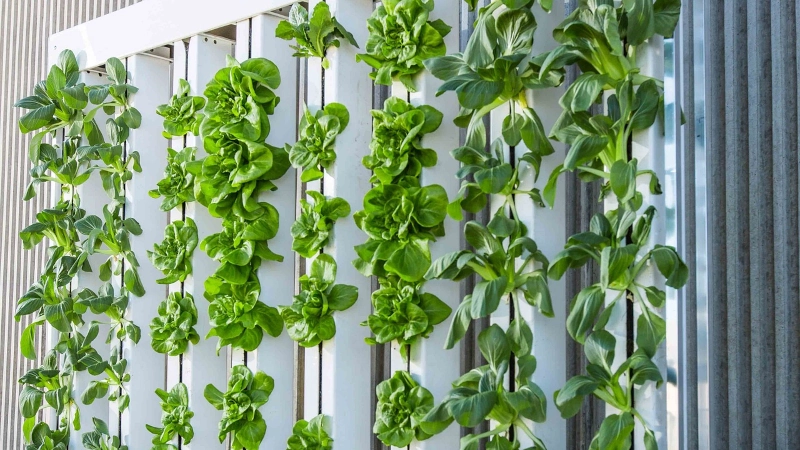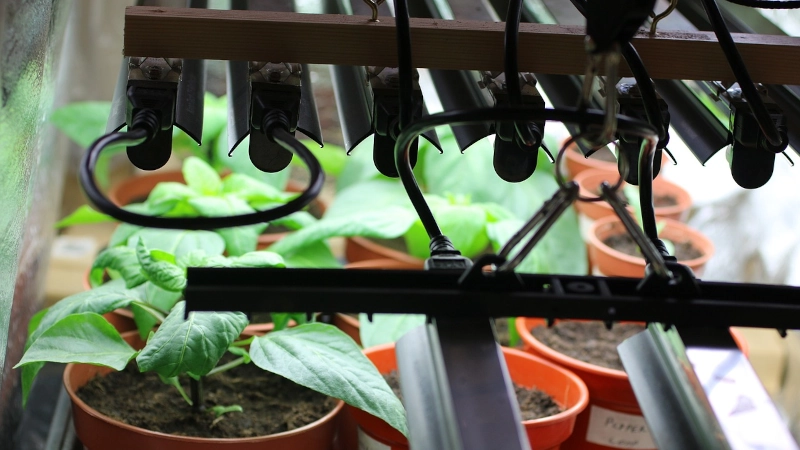Indoor vertical gardens are gaining popularity among homeowners and restaurants, allowing them to grow microgreens year-round, but new research has identified a major drawback: their demands on energy.
A study by researchers from the Marche Polytechnic University and University of South Australia shows that while domestic vertical garden appliances can provide fresh, local produce under controlled conditions and with zero food miles, they do chew up energy.
Artificial lighting – essential for plant growth – accounted for more than 50% of the total energy costs in growing a crop of red lettuce, which is five times higher than professional vertical farming setups.
The ventilation and irrigation systems also accounted for a significant share of the overall energy usage, consuming 18% and 9% of the power costs respectively.
The study, published in the 2024 IEEE International Workshop on Metrology for Living Environment (MetroLivEn), investigated the electricity consumption of a commercial home cultivator – or indoor garden – using smart meters to provide real-time information on electricity usage and peak demands.
Lead author Dr. Gianluca Brunetti says the findings highlight opportunities to improve the technology used in domestic indoor vertical gardens to overcome energy inefficiencies.
“Indoor vertical farming has significant potential to contribute to urban agriculture by growing crops year-round in compact spaces,” Dr Brunetti says.

“However, energy consumption, particularly from artificial lighting and ventilation systems, must be carefully managed to ensure these systems are not only viable but also sustainable in the long term.
The researchers say that while indoor vertical gardens are still in their infancy, they anticipate the market will grow substantially over the next decade, in line with a move towards more sustainable cities.
Vertical farming is seen as a potentially resource-efficient technology that can save water, nutrients, labour and space. It could also produce crops out of season and protect them from pests.
Like any rapid innovation, it does come with drawbacks (initial capital cost and high energy usage) which manufacturers do not disclose, while exaggerating the benefits, the researchers say.
Co-author UniSA Professor Enzo Lombi says switching to LED lighting, enhancing ventilation efficiency, and improving the design of the appliance could significantly reduce energy consumption.
“As these systems become more mainstream, improvements in design and energy management will make them more sustainable. Transitioning to renewable energy sources would further enhance their environmental benefits,” Prof Lombi says.
The study also proposes the adoption of energy labelling, similar to that used for other household appliances, to help consumers make informed decisions about the sustainability of these devices.
The post Energy-Thirsty Indoor Vertical Gardens Ripe for Improvement first appeared in the University of South Australia’s news media centre.
About the study: The research is part of the VITALITY project (ECS00000041 – CUP I33C22001330007) funded by the European Union – NextGenerationEU within the National Recovery and Resilience Plan (NRRP), aimed at promoting innovation in sustainability across Central Italy.
“Sustainable Domestic Vertical Farming: Energy Consumption of an Indoor Farming Appliance” is authored by researchers from the Polytechnic University of Marche and the Future Industries Institute at the University of South Australia. DOI: 10.1109/MetroLivEnv60384.2024.10615743



